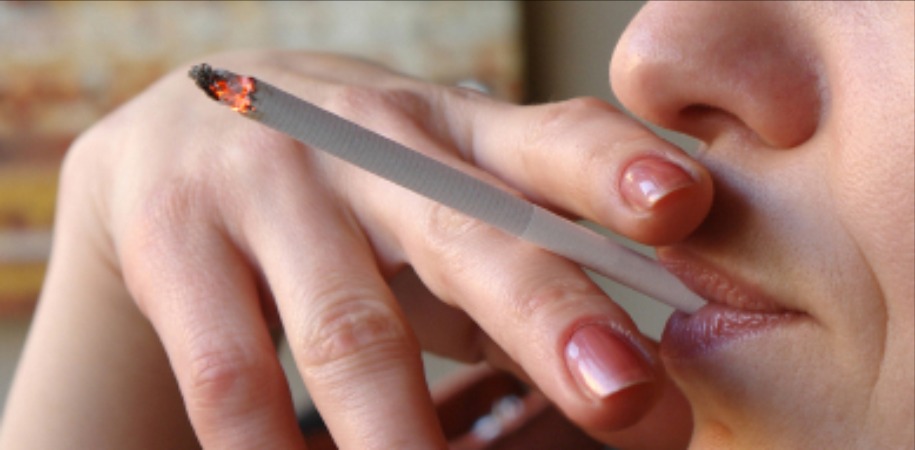by Allergy Partners
March 1, 2023
Effects of Secondhand Smoke

There has been mounting evidence connecting exposure to secondhand smoke to illness and diseases due to the irritating nature of tobacco smoke on the non-smoker.
Despite significant educational efforts, epidemiologic evidence, and reports from the United States Surgeon General, smoking and smoking-related conditions are a major health concern. The irritating nature of tobacco smoke on the non-smoker has long been recognized. Since the 1960’s, there has been mounting evidence connecting exposure to secondhand smoke to illness and disease.
Secondhand smoke is a term used for the involuntary exposure of nonsmokers to tobacco smoke from smokers. Another commonly used term is Environmental Tobacco Smoke. Secondhand smoke is a mixture of side stream smoke given off by the smoldering cigarette, pipe, or cigar and mainstream smoke exhaled into the air by active smokers. Third hand smoke refers to smoke components deposited on surfaces.
In the News:
The Global Burden of Disease Study done in 2010 estimated that exposure to secondhand smoke is responsible for 601.000 premature deaths annually worldwide. It is estimated that 28% of the mortality and 61% of the morbidity is seen in children. Secondhand smoke has been found to be a cause of lung cancer by several epidemiologic studies. Cardiac disease has also been causally associated with secondhand smoke exposure in adults. Mounting evidence also points to secondhand smoke exposure as a cause or aggravator of a variety of adverse respiratory conditions including asthma, pneumonia, bronchitis, reduced lung function, sinusitis, and COPD. Secondhand smoke exposure is also implicated as a cause of middle ear disease, sensorineural hearing loss, sudden infant death syndrome, prematurity, impaired fetal growth and development, dental caries, cancers in locations other than the lungs, renal disease, and atherogenesis.
How It Can Affect Your Family:
The level of tobacco exposure of the fetus of a mother who smokes is the same as the level for an active smoker. There is a higher risk of stillbirth and neonatal deaths among newborns of smoking mothers. Maternal smoking during pregnancy reduces birth weight on an average of 200 grams. Active smoking of the mother during pregnancy is also associated with an increase in a large variety of non-chromosomal birth defects. Cognitive deficits tend to be more prevalent in children whose mothers smoked during pregnancy. Exposure of the non-smoking mother to secondhand smoke during pregnancy has been associated with an increased incidence of low birth weight, stillbirth, and congenital malformations.
The Global Study of Disease Burden from exposure to secondhand smoke estimates that 165,000 children under the age of 5 worldwide die annually because of lower respiratory infections attributed to secondhand smoke exposure. Chronic exposure to secondhand smoke is linked to an increased prevalence and severity of asthma. There is also evidence that secondhand smoke exposure promotes and facilitates allergic sensitization. Children with chronic secondhand smoke exposure enter adulthood with less pulmonary reserve and decreased lung function.
Exposure of children and adolescents to parental smoking has been associated with advancement of the vascular age by 3.3 years by measurement of carotid artery thickness. This increases the risk of developing carotid atherosclerotic plaques in adulthood even with adjustments being made for other risk factors such as blood pressure, lipid levels, and personal smoking status. There is growing concern about increased risks of coronary artery disease in adults and children exposed to secondhand smoke.
What Can I Do?
Reducing and preferably eliminating secondhand smoke in the home and in vehicles is critical since these are the major locations of exposure for children and non-smoking adults. Secondhand smoke cannot be controlled by air cleaning and filtration, or building ventilation. These findings on the effects of secondhand smoke are the foundation for the drive for smoke-free indoor environments and for educating parents and the community on the adverse health effects. Policies that ban all indoor smoking in workplaces and public places are highly effective in reducing smoke exposure. Only complete bans of smoking in indoor environments are effective. Segregation of smokers and non-smokers within the same indoor environment may reduce some of the exposure, but does not eliminate it.
Bonita Wilson, MD
